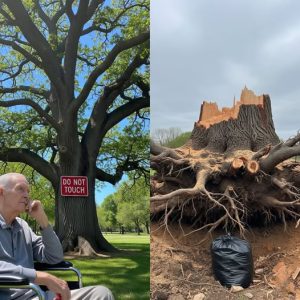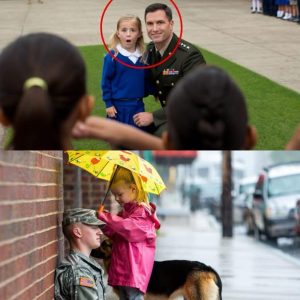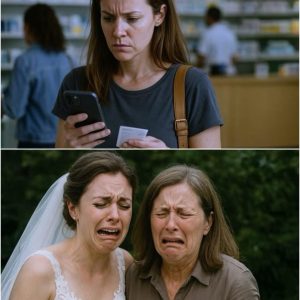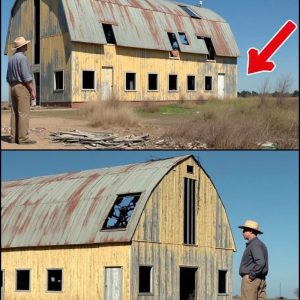3 teenagers who hit old biker were busy filming him for social media instead of calling 911. They stood there laughing, actually laughing, as this 64-year-old grandfather tried to crawl toward his destroyed Harley, his left leg bent completely backwards, blood pooling beneath his helmet.
“Look at the old man trying to save his bike!” one kid shouted, pointing his phone’s camera at the dying man’s struggle.
“This is gonna go so viral!” That’s when I recognized the biker’s vest – the same patches, the same military medals, the same “Vietnam Veteran” rocker that my father wore until the day he died. And something inside me snapped.
“Call 911!” I screamed, jumping out of my car.
The tallest teenager, maybe seventeen, turned his camera on me. “Chill lady, someone probably already called. This is content gold.”
Content gold. A human being was dying, and to them, it was content gold.
I ran to the biker, dropping to my knees in the broken glass and motor oil. His breathing was shallow, labored.
Through his cracked helmet visor, I could see his eyes – confused, frightened, but still conscious.
“Sir, I’m here. Help is coming,” I lied, pulling out my own phone to actually call for help.
“My… bike…” he whispered, reaching toward the twisted metal that had been his Harley.
“Don’t move. Please don’t move.” I could see bone protruding through his jeans. “What’s your name?”
“Tom… Tom Sanders…”
Behind me, the teenagers were still filming, commentating like sports announcers. “Oh shit, his leg is backwards! Zoom in on that!”
But what happened next would turn their viral video into evidence that would destroy their lives and……….

I snatched my phone out of my pocket and dialed 911 with fingers that wouldn’t stop shaking. I kept one eye on the tallest kid—the one narrating like this was a livestream—and the other on Tom, whose breath came in ragged little pulls. The dispatcher kept me calm enough to give the address, describe the injuries, tell me to apply pressure, to keep him still.
“Move,” I said to the kids, voice hard, and for the first time they actually looked up from their screens as if someone had slapped them awake. The tall one scoffed and shoved his phone into the back pocket of his ripped jeans. “We’ll be fine,” he said. “This is perfect—”
“You’re not fine,” I snapped. I grabbed his wrist, felt the thin bone under the skin. He tried to yank away, but my grip tightened. “Give me your phone. Now.”
He froze, then started to laugh like he thought I was joking. The laugh died when he saw my face. It was not a look they’d seen in any of their clips: it was something older, colder—a kind of quiet fury that you don’t get at seventeen unless you’ve watched someone you love die and swore you’d never let it happen again.
Someone in the crowd shouted, “Call an ambulance, lady, not a quarantine!” which only made my jaw clench harder. I pulled the phone from him anyway. He scrambled, but two other bystanders moved in. One of them—an older woman with a grocery bag—grabbed the kid’s other arm. Another man, who smelled like cigarettes and grease, blocked the tallest teen’s path like a human wall.
“Don’t delete it,” I told the girl with the bobbed hair who was still filming with shaky fingers. “If you delete it, you’re destroying evidence.”
She blinked, then focused like a fly following a flame. “Why would I do that?”
“Because your footage is the only reason we can find who hit him if they try to run. Because you might be the only one whose camera caught the license plate.” My voice had dropped into that tone my father used when he called bullshit. It landed.
The girl lowered the phone as if a hand had pushed it down. The tallest kid tried to wrench his wrist away, and the grocery-bag lady slammed his camera hand into the pavement and pinned it there until the police arrived. Someone else—someone with a softer face—had already dialed 911 and was giving the EMT directions to the broken leg, the bleeding, the helmet crack.
I pressed my hands to the wound as the dispatcher told me to, through my gloves and a plastic bag I ripped open from my grocery haul. The kid—Tom—moaned and mouthed my name like I’d given him oxygen. “Don’t move, Tom. Help is coming.” He squeezed my hand with fingers that trembled.
Sirens were distant at first, then closer, the way hope sounds when it’s enclosed in steel. A police cruiser pulled up, lights dizzying. Officers leapt out, barking, corralling people—shouts like thunder: who saw what, where’s the driver, did anyone call it in? One cop took the tallest kid aside and read him his rights for obstruction and for failing to render assistance. Another officer asked everyone with phones to hand them over; some people willingly did, some tried to hide them. One of the officers took my confiscated phone and copied the footage onto his tablet. He tapped through the video and froze when he caught the license plate reflected in the biker’s chrome—clear as a photograph.
A patrol car sped off, lights blazing, following a lead no one had even imagined would come from a teenager’s stupid live stream. The initial laugh that had filled the air was replaced by a stunned, growing hum as onlookers realized what had almost happened.
The EMTs moved fast, efficient in a way I’d seen only in movies and in hospital corridors. They stabilized Tom’s leg, applied a tourniquet, slid a rigid board under him, and lifted him gently like you lift something precious. As they worked, Tom’s eyes kept searching the crowd until they found mine and he gave a tiny nod—you did good—and I felt my throat break in a way that wasn’t just about him. It was for every man who’d ever been laughed at while bleeding on the pavement, for every old biker who’d taught my father how to ride straight and hard.
At the hospital that night I signed statements, watched footage as officers replayed angles and timestamps, and gave them the names of every kid who’d been filming. The footage—once a weapon for thoughtless virality—became the backbone of the case. It showed not only the kids’ dereliction but the moments of true reaction: the driver of the SUV slowing, the instant the bike and rider went down, the license plate reflected in a dented side mirror. The teens tried to scrub their posts, but cloud backups, people who had already reshared, and the law had other plans. The internet, which had turned human misery into entertainment, turned on them with a ferocity I hadn’t expected. News cameras called; local reporters wanted footage and interviews, and a hashtag—#RideWithRespect—started to trend, led by the biker community and veterans’ groups.
Tom’s surgery was brutal, but they saved his life and, miraculously, most of his leg. In the ER waiting room I watched him sleep with his head tilted toward the window like a child. When he woke, his first word was, “Bike?” He chuckled weakly when I told him it would be okay, that his friends were sorting things, that the club would come around with a hat and a handshake. He reached up and patted my arm like a veteran acknowledging kin.
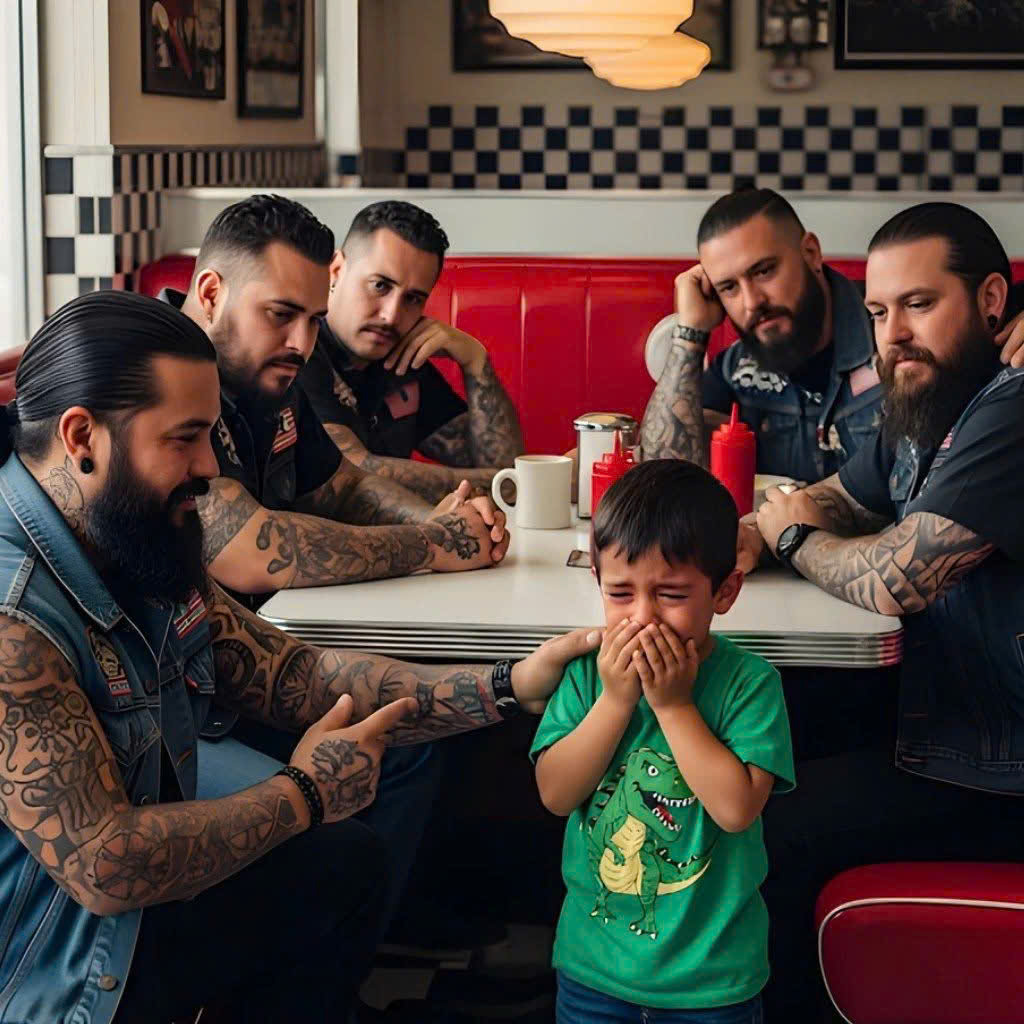
The police charged the driver with reckless driving and hit-and-run; the teens faced charges for obstruction, failure to render aid, and contributing to an unsafe environment. They were suspended from school, parents dragged into courtrooms, apologies scrawled and then deleted. One of the boys’ families paid for the window at the repair shop—out of legal obligation, not remorse—and the footage ensured the boy couldn’t use anonymity as a shield.
But the real aftermath happened quieter. At the garage where the bikers congregated that week, Tom’s vest hung like a banner patched with new resolve. Men who’d seen war and hardship collected funds for the repair; they organized to teach young riders safety and respect at community centers where the kids who had filmed could come and listen, uncomfortably, to real stories of consequences and courage.
Later, in my kitchen, I found myself looking at my father’s old patch that I’d kept—a small piece of leather with his unit number. I thought about the way we almost let a life become a clip, a moment of entertainment. I thought about the line between witnessing and participating and how quickly the world could forget what it owed to people like Tom.
When Tom was well enough, he walked into the garage on two legs and a cane, grinning like someone who’d been punched and decided to laugh at the punch. He clasped hands with the men who’d come to his side, and then he pointed to one of the kids who’d filmed it all and said, loud enough for everyone to hear, “You watched me on the ground. You can make your life about clicks—or you can make it about honorable things. Choose.”
The kid turned red and looked away. Later, he volunteered at a community safety program. The viral video that had promised him fame turned into a course on consequence. The internet still ate up spectacle, but in our town the taste had changed: we learned to value help over hits.
I never expected to be the person who’d snatched a phone from a teenager and refuse to let a human being become content. But that day, something inside me—something my father had taught me—kicked like an engine. We wanted to protect the road, the people on it, and the history worn into the leather vests of men like Tom. In the end, the footage that almost ruined everything became the thing that made them pay attention. And Tom—Tom got to ride again, slower, but with a new badge of honor stitched to his vest and a town that knew how to stop and help.


